Can Waterfalls Improve Mental Health?
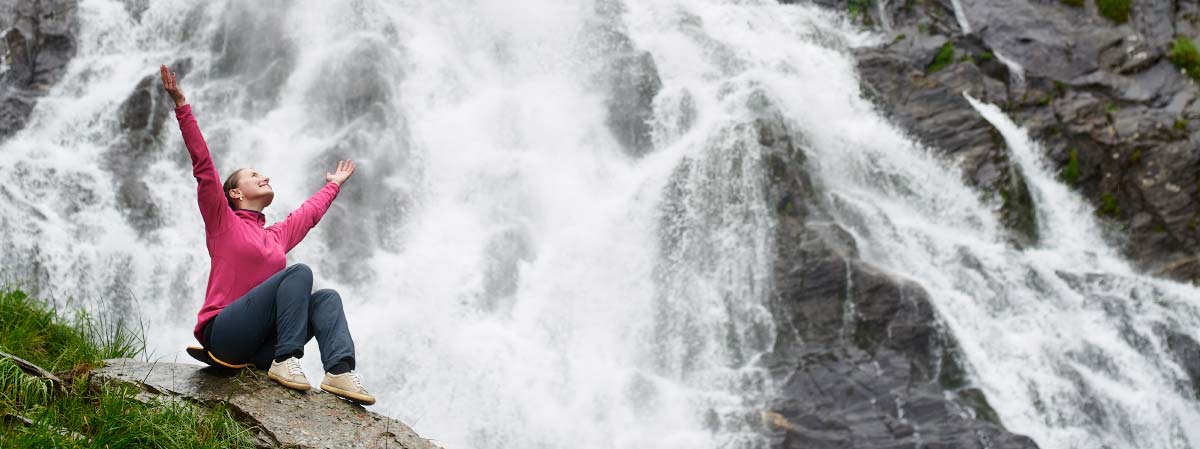
Waterfalls have long been admired for their natural beauty and peaceful ambiance. But could they also have a positive impact on our mental health? A Google search reveals many articles from the likes of pop journalists, alternative health advocates, and people just trying to sell you stuff—all agree, with resounding confidence, that it does. Waterfalls improve mental health. Or many wish it to, at least.
I dug a little deeper in search of evidence, scientific studies, and potential pathology to support these claims, removing my biases (as a happy waterfall fan myself) to get to the truth and give you a definitive answer. While you should read on, let me be clear and concise up front: at this time, and probably for years to come, no definitive scientific evidence exists that proves waterfalls improve mental health. This is primarily because there are only a very few, very small, studies looking into it. Luckily, there are plenty of studies in that general direction that are pretty promising. Let’s take a look more at what this means and if there could be a link out there ready to be discovered.
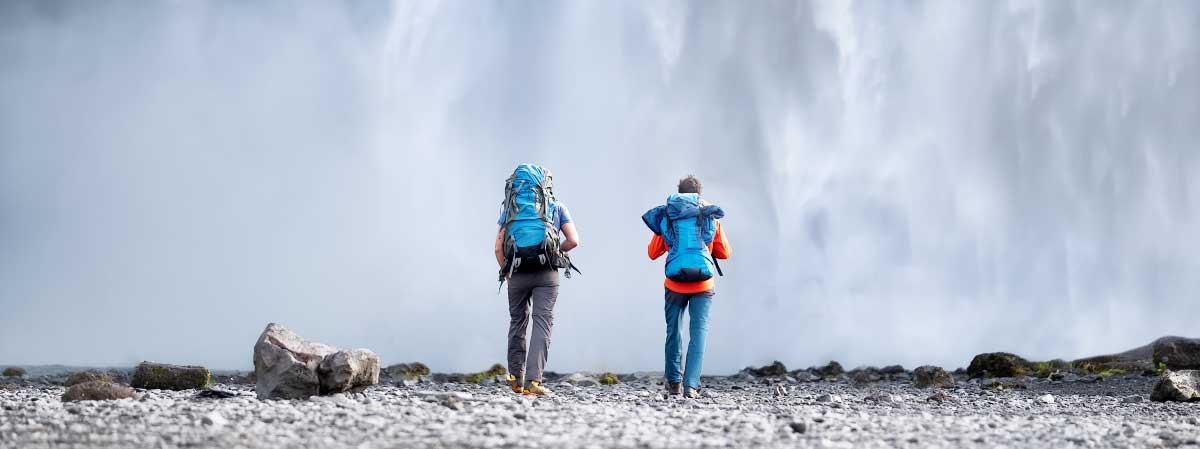
Blue Space
Recent research suggests that being near waterfalls can indeed have a calming effect on the mind and body (at least anecdotally), and may even help to reduce stress and improve mood. The theory linking waterfalls and mental health centers around the idea that the sound of falling water can have a calming effect on the mind and body. This is similar to the concept of “Blue Space,” which refers to the beneficial effects of being near bodies of water like oceans, lakes, and rivers. The sound of moving water is thought to stimulate the release of endorphins, which are chemicals in the brain that are associated with feelings of happiness and well-being. Additionally, some believe the sound of falling water can also help to mask other sounds that may be disruptive to relaxation, such as traffic or other city noise, although there is little evidence to support the notion that waterfalls do this.
Blue Space therapy is a mildly active area of research and some studies with children, have shown promising results. So what is it about water that would trigger endorphins, calmness, and grins? It could actually be very simple… er “primal” is probably a better way of putting it. For millions of years, we land animals have had a compulsion to find water. We need it to survive, for food, and for some (amphibians), to reproduce. Our bodies have adapted the feeling of hunger and the act of salivating when seeing and smelling food, and even that brain-chemical-sparkle we get after filling our tummies. This is not unique to humans. Even a slug, in its own slimy way, has its own similar reaction adapted to encourage the hunt for nutrients to survive. A source of water, obviously as important as food, likely evolved a visceral reaction to draw in the most primitive of species to ensure their survival. Basically, we (land animals) evolved to be drawn to the sound, smells, and sight of running water. One way biology rewards survival in the Darwinian sense, is to release a few hormones into the bloodstream as a “thank you for living.” Whether it’s through sex, grooming, exercise, or satisfying a snack craving, this biological system of primal urges and chemical rewards can be found everywhere, and in every species. It would be no surprise that bodies are chemically drawn to this essential need, and then rewarded upon finding it.
Research has also shown that just spending time in any form of nature can have a positive effect on mental health. In one study, participants who took a 90-minute walk in a natural setting reported lower levels of rumination (repetitive negative thinking) and had lower activity in the part of the brain associated with risk for mental illness compared to those who walked in an urban setting. Other studies have shown that spending time in nature can reduce stress, improve mood, and increase self-esteem. Still, the nuances of this therapy are yet to be explored. It is not known if these results are long-term or can counter depression effectively. I wouldn’t bet on improving your happiness by buying a waterfall fountain for your home or taking a yearly trek to Watkins Glen. There’s more evidence that changing your lifestyle to be more physically active (waterfalls or not) is a better bet. Read more about that further down.
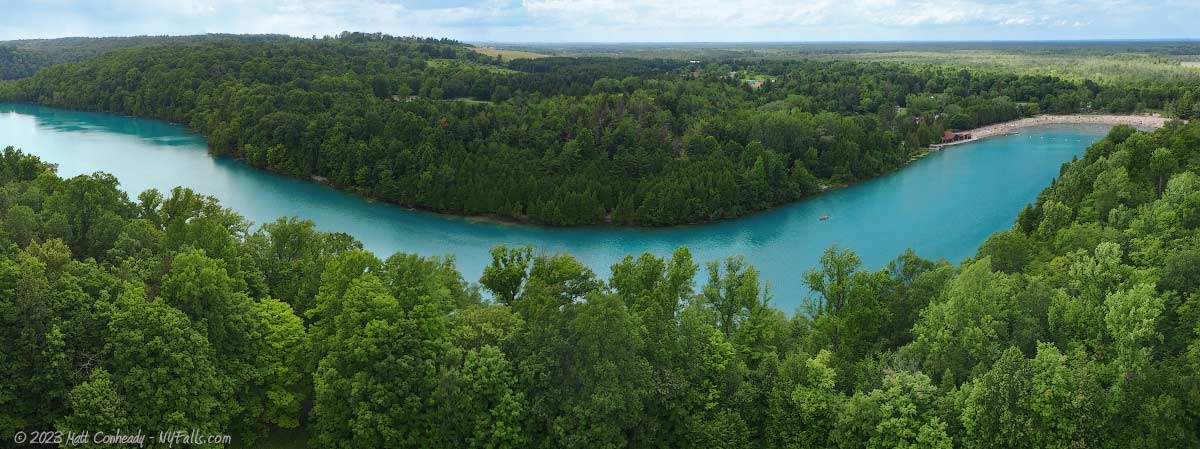
Anxiety and Excitement
While the calming effect of waterfalls is reported by some, several people claim that being around waterfalls presented them with a sense of exhilaration, excitement, and hints of anxiety. Why would that be? Do those emotions contribute to positive mental health? Unfortunately, I could not find many studies into this. It’s possible that exhilaration and excitement may be a result of the body’s chemical reward for finding a water source, as explained above. I would hypothesize that feelings close to anxiety may also be evolutionary. When we are looking at evolution and survival, we are not just talking about finding sustenance. We also to consider the instinct to avoid predation. Have you ever been in a noisy glen where every sound is masked by the sound of rushing water, and you can’t even hear the sound of someone approaching you? For creatures adapting and evolving on land, seeking fresh water was a risk. All the animals meet at the water source. Predator and prey. When one of your senses is masked, anxiety and alertness quickly kicks in. There is evidence that loud noise, especially loud droning-like sounds, leads to anxiety.
More Nature = Better Mental Health*
*Likely.
While studies specifically looking at waterfalls are hard to come by, the effects of natural spaces on mental health is a very active field, with several high-profile studies that have generally leaned towards a positive outlook. Many studies have shown improved stress levels, cognition, focus, and some factors of mental health, as well as reduced symptoms of stress after exposure to natural spaces. While not every study shows a concrete correlation between nature and improved mental health, there are signs that something positive is certainly there, and warrants further investigation. It may be visceral as hinted above, or it may be a result of simply getting away from a more stressful urban and work environment. It’s too early to know if the cause in any improvement is really a day at the park, or simply taking a day off from work or school. Trips to monasteries, zoos, and other “restorative environments” have been shown to have similar effects, despite not being “natural” in a classic sense.
As far as the correlation that seems to be emerging in the ongoing studies between nature and mental health, we have only scratched the surface. It may be years and many more studies before we reveal what improves what and for how long. Then we can begin to apply doses of nature in a therapeutic sense with some degree of confidence. Luckily, urban planners and architects have already taken the hint and have been implementing more green spaces into plans for years, and some have been working with researchers to measure the impact of their efforts.
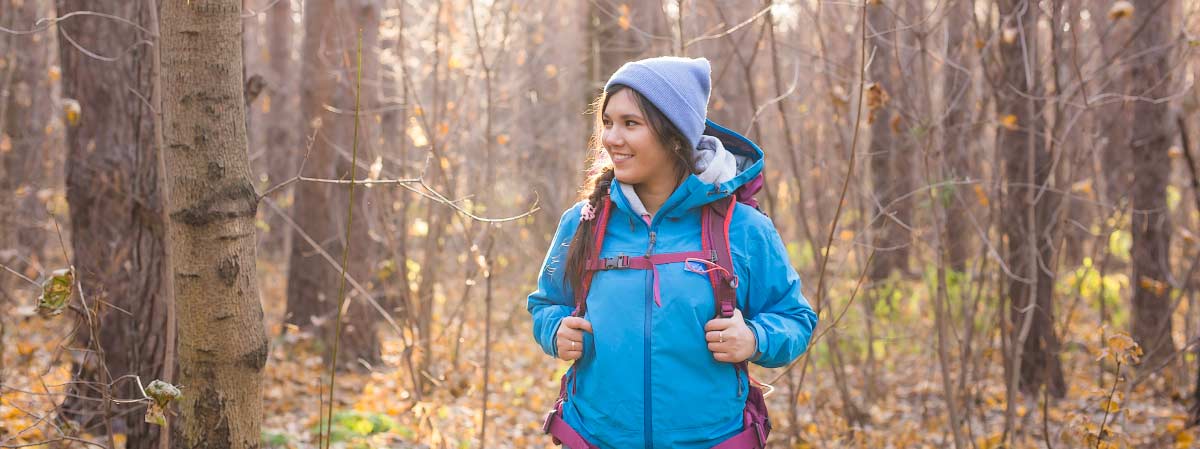
Natural Beauty and the Journey There
The natural beauty of waterfalls may also have a positive effect on mental well-being. In a study, participants who viewed nature images, including waterfalls, reported lower levels of stress and improved mood compared to those who viewed urban scenes. It’s possible this could be the same correlation seen with art and music’s impact on the mind, a field well-studied and now used therapeutically. It could very well be that beautiful things, both real and depicted, contribute to positive mental health, at least temporarily.
When talking about mental health, it would be cursory to ignore physical health. In much of the world, a part of experiencing a waterfall in nature means journeying to it. Hiking, jogging, or biking into a park to be next to the waterfall may be a major contributing factor to the effects people attribute to the waterfall itself. Aerobic exercise has been proven to reduce anxiety and depression. Additionally, an increase in physical activity has been shown to improve mental health, with lifestyle changes (to be more active overall) leading to long-lasting improvements in a variety of areas, through increased self-esteem and cognitive function. Some studies have shown that all it takes is thirty minutes of exercise of moderate intensity, such as brisk walking for 3 days a week, to start seeing benefits.
That is to say, we should stop short of saying that exercise is a cure for depression and that waterfall hiking is all one needs as treatment. Still, if chasing waterfalls is the hobby and motivation you need to get out and do some physical exercise and become more active, and you feel great about it, then we are done here. For you, waterfalls improve your mental health. Just don’t use that as a substitute for professional treatment if you need it.
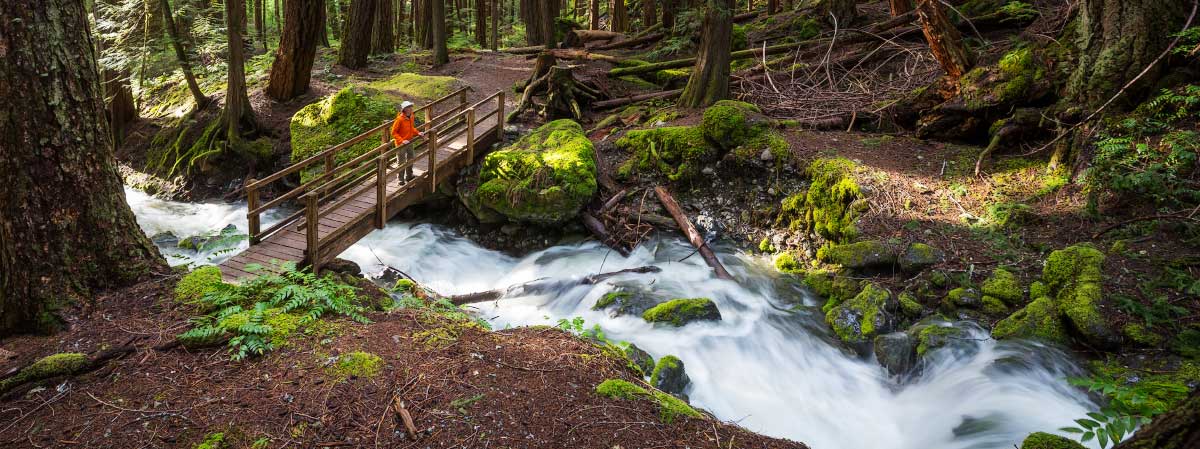
Not a Conclusion*
*Because there’s still a lot we don’t know.
While these studies suggest that being near waterfalls, flowing water, and nature in general may have a positive effect on mental health, far more research is needed to fully understand the relationship. Studies done so far are mostly observational, and more controlled studies are needed to establish causality. We then need to know what triggers it, the dosage (so to speak), what the boundaries of its effects are, as well as the long term impacts. From there, appropriate therapies and treatments can be designed and recommended to best help people enjoy both nature and the mental health impacts. We are a long way off.
Anecdotally, there doesn’t seem to be any harm in getting out more, enjoying nature, and taking in its wonders. As long as we avoid those who put products and services based on bad science in front of us, detracting from real proven therapies, I see no problem with standing below a 40-ft waterfall and believing “this is good for me.” While we wait on the scientific community to figure all that out for us, we’ll continue chasing waterfalls and smiling.
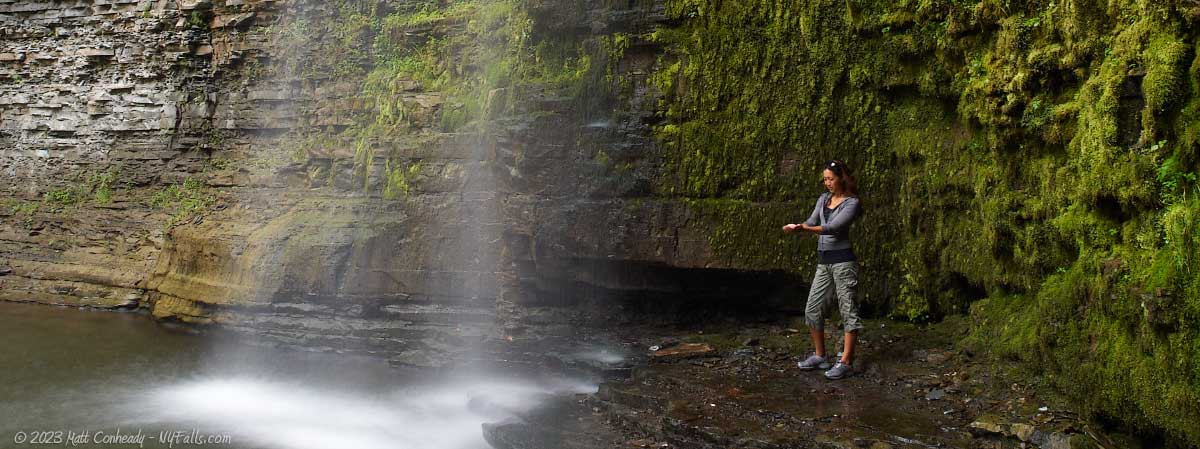
10 Must-Visit Waterfalls In New York State
A selection of the most popular and accessible waterfalls around the State of New York. From Niagara Falls in Western NY to Kaaterskill Falls in the Hudson Valley Region.
Further reading
- A population-based retrospective study of the modifying effect of urban blue space on the impact of socioeconomic deprivation on mental health, 2009–2018
- Features of urban green spaces associated with positive emotions, mindfulness and relaxation
- Exposure to neighbourhood green space and mental health: Evidence from the survey of the health of Wisconsin
- Longitudinal effects on mental health of moving to greener and less green urban areas
- Effects of exercise on anxiety, depression and mood [in Polish]
- Physical activity and mental health: the association between exercise and mood




